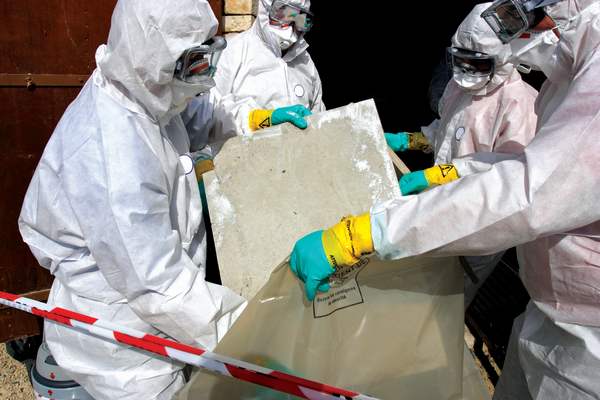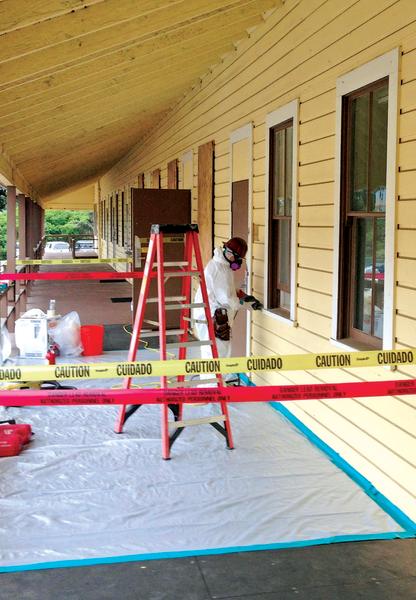
No matter how well built, older houses are likely to contain environmental hazards. The EPA estimates that 87 percent of homes built before 1940 contain lead paint. Asbestos is ubiquitous in 20th-century building components, from wall and pipe insulation to vinyl-asbestos tile.
A toxin that affects the nervous system, lead was a key component in house paint before its use was banned in 1978. While asbestos has been banned in many common building materials, it’s still permitted in others, including cement roofing and siding shingles, roof coatings and felt, and some types of vinyl floor tile.
Left undisturbed, the lead in paint and the asbestos in building components are not hazardous. When a renovation project affects these materials, though, toxins can be released into the environment, posing a danger to both residents and the construction crew. That’s why jurisdictions from the federal to the local level now regulate the removal of materials that contain lead and asbestos.
The Risks
When lead-based paint is disturbed by chipping, scraping, sanding, or high-heat removal, it releases particulates. Just a small amount of lead-contaminated dust—less than 1⁄16 of the amount in a sugar packet—can cause nerve and brain damage in children. In adults, lead exposure can lead to hypertension, a major risk factor for heart disease.
Asbestos is most dangerous when it’s deteriorating or disturbed, releasing fibers into the air. If the material is in good condition—say, as heating duct insulation inside walls—it’s better to leave it alone, says the U.S. Consumer Product Safety Commission. Removing it may create a health hazard where none existed.
When an asbestos-containing material is damaged, it becomes friable, releasing microscopic asbestos fibers into the air, where they can be inhaled or swallowed. Exposure can cause lung cancer, and also a rare related cancer called mesothelioma.

Usually associated with industrial exposure, mesothelioma is incurable and has a latency period of 20 to 50 years. People who work on old houses are at high risk, too. Even short-term exposure, as might occur when prying up old vinyl floor tiles without wearing a respirator, has been known to cause mesothelioma.
The Remedies
For lead:
In 2010, the Environmental Protection Agency passed a rule requiring that commercial contractors use only low-temperature heating devices and vacuum-attached power tools to mechanically strip paint suspected of containing lead.
Contractors are required to use containment methods to keep paint and debris from spreading beyond the work area.
While the rules do not apply to homeowners doing their own work, it’s a good idea to follow the same regimen. Best practices include covering exposed areas and furnishings that can’t be removed with plastic sheeting and/or sealing off the entire work area; wearing a NIOSH-certified disposable respirator with a HEPA filter; and using a vacuum cleaner equipped with a HEPA filter for cleanup. (More: www2.epa.gov/lead/renovation-repair-and-painting-program-do-it-yourselfers)
For asbestos:
If you suspect you have deteriorating asbestos in your home, don’t try to remove it yourself, even to take a sample. Contact an accredited asbestos inspector to assess and test it. If asbestos is found in an area under renovation, many jurisdictions issue stop-work orders until the material is removed. The work should be done by a certified asbestos remediator (usually a different party from the inspector, for conflicts-of-interest reasons). Asbestos remediation is regulated at the state level: look for licensed pros online at your state’s government site (Google state name and “asbestos regulations”).
Again, there’s usually no need to disturb sound materials that contain asbestos. And instead of ripping up old vinyl tile, cover it with new flooring instead.







